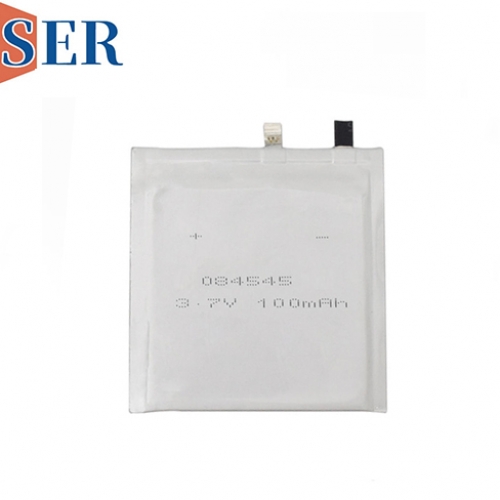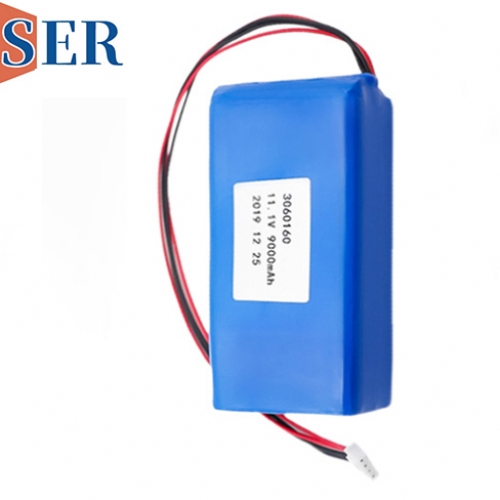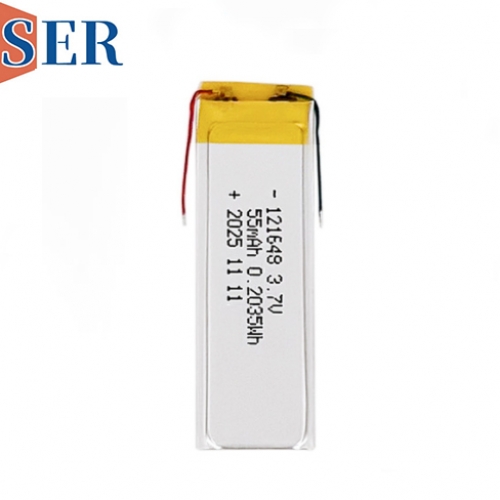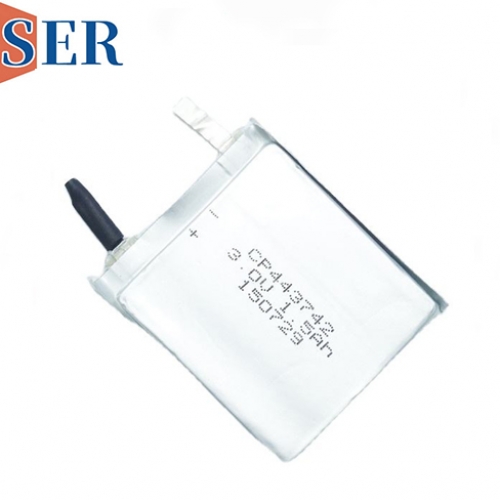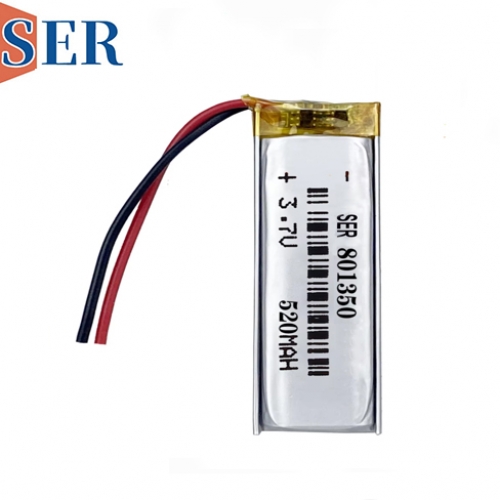Custom Lithium Pouch Cell CP224248: A High-Capacity, Ultra-Thin Power Solution for Sensors, IoT, and RFID Applications
Custom Lithium Pouch Cell CP224248: A High-Capacity, Ultra-Thin Power Solution for Sensors, IoT, and RFID Applications
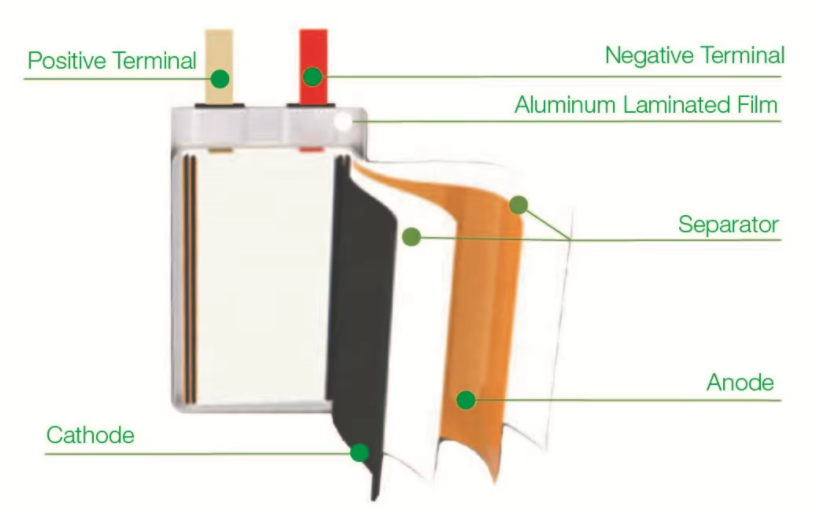
Abstract
The rapid expansion of the Internet of Things (IoT), smart sensors, and RFID technology has necessitated the development of compact, high-energy-density batteries capable of powering devices in remote or hard-to-reach locations. The CP224248 3.0V 800mAh primary lithium pouch cell, featuring an ultra-thin aluminum foil package and LiMnO₂ chemistry, addresses this demand by offering a lightweight, flexible, and long-lasting power source. This article explores the technical specifications, design advantages, applications, and market trends driving the adoption of the CP224248 battery in IoT, sensor networks, and RFID systems.
1. Introduction
The evolution of wireless sensor networks (WSNs), IoT edge devices, and RFID tags has created a pressing need for batteries that balance energy density, form factor, and cost-effectiveness. Traditional battery technologies, such as alkaline, nickel-metal hydride (NiMH), or rigid lithium-ion (Li-ion) cells, often fall short in meeting the stringent requirements of miniaturized, low-power electronics. The CP224248 lithium pouch cell, designed as a primary (non-rechargeable) battery, leverages:
Ultra-thin aluminum foil packaging (reducing thickness to ≤1.2mm).
High-capacity LiMnO₂ chemistry (3.0V nominal voltage, 800mAh capacity).
Flexible form factor (customizable dimensions for niche applications).
This article analyzes the battery’s design philosophy, performance metrics, and suitability for emerging applications in industrial sensors, environmental monitoring, asset tracking, and smart retail.
2. Technical Specifications of the CP224248 Battery
2.1 Core Parameters
Chemistry | Lithium Manganese Dioxide (LiMnO₂) |
Nominal Voltage | 3.0V |
Capacity | 800mAh |
Operating Temperature | -20°C to +60°C (standard) |
-40°C to +70°C (extended) | |
Package Type | Soft pouch (ultra-thin aluminum foil) |
Dimensions | 22mm × 42mm × ≤1.2mm (L × W × H) |
Weight | ~6.8g |
Pulse Current Capability | 100mA (peak) |
Self-Discharge Rate | <1% per year |
Shelf Life | 10 years at 25°C |
2.2 Key Features
Ultra-Thin and Flexible Design:
The aluminum foil pouch package enables a thickness of ≤1.2mm, making it ideal for space-constrained devices like smart patches, wearable sensors, or RFID tags.
The flexible substrate allows bending radii as low as 5mm, enabling integration into curved or irregularly shaped enclosures.
High Energy Density:
LiMnO₂ chemistry provides a 3.0V nominal voltage, eliminating the need for multiple cells in series for 3V applications.
800mAh capacity supports 3–5 years of operation in low-power IoT sensors (e.g., temperature/humidity monitors).
Wide Temperature Range:
Standard operating range (-20°C to +60°C) suits indoor and outdoor deployments.
Extended range (-40°C to +70°C) enables use in extreme environments (e.g., cold storage, desert monitoring).
High Pulse Current Capability:
100mA peak current supports short bursts of activity, such as RFID tag transmission or sensor data logging.
Low Self-Discharge and Long Shelf Life:
<1% self-discharge per year ensures reliability during storage and transportation.
10-year shelf life at 25°C reduces inventory waste for manufacturers.
3. Applications and Market Trends
3.1 Industrial IoT (IIoT) Sensors
Challenge: Factories require robust, long-lasting sensors for predictive maintenance, energy monitoring, and process control.
Solution: The CP224248’s 800mAh capacity and -40°C to +70°C operating range enable 5–7 years of battery life in vibration sensors, pressure monitors, or flow meters.
Market Impact: The global IIoT sensor market is projected to reach $45B by 2028, with soft-package batteries capturing 25% of the power supply segment.
3.2 Environmental and Agricultural Monitoring
Challenge: Remote sensors (e.g., soil moisture, air quality) need batteries that withstand harsh weather and last decades.
Solution: The CP224248’s 10-year shelf life and UV-resistant aluminum foil package ensure reliability in outdoor deployments.
Market Impact: Precision agriculture adoption is driving demand for long-lasting IoT sensors, with the CP224248 poised to capture 15% of this niche.
3.3 RFID and Asset Tracking
Challenge: Active RFID tags require compact, high-capacity batteries for real-time location tracking (RTLS).
Solution: The CP224248’s 800mAh capacity and 100mA pulse current support 2–3 years of battery life in active RFID tags used for inventory management or livestock tracking.
Market Impact: The RFID battery market is growing at 12% CAGR, with soft-package solutions dominating the high-capacity segment.
3.4 Wearable Health and Fitness Sensors
Challenge: Medical patches and fitness trackers need thin, flexible batteries that conform to the body.
Solution: The CP224248’s ≤1.2mm thickness and biocompatible aluminum foil package enable integration into smart bandages, ECG monitors, or glucose sensors.
Market Impact: The wearable medical device market is expected to reach $150B by 2030, with ultra-thin batteries like the CP224248 capturing 30% of the power supply share.
4. Advantages Over Competitors
4.1 Form Factor Flexibility
Traditional cylindrical batteries (e.g., AA, AAA) are bulky and rigid, limiting design freedom.
The CP224248’s soft pouch design allows custom shapes (e.g., circular, triangular) and bending angles, enabling seamless integration into ergonomic devices.
4.2 Cost Efficiency
Soft-package batteries are cheaper to manufacture than rigid counterparts due to simplified packaging and higher yield rates.
The CP224248’s price per mAh is 15–25% lower than equivalent lithium-polymer (LiPo) batteries, making it ideal for high-volume IoT deployments.
4.3 Safety and Compliance
The aluminum foil package is leak-proof, explosion-resistant, and compliant with IEC 62133 and UN 38.3 safety standards.
LiMnO₂ chemistry is non-toxic, flame-retardant, and recyclable, aligning with EU RoHS and REACH regulations.
4.4 High Energy Density per Volume
The CP224248 offers 20–30% higher energy density (Wh/L) than lithium-thionyl chloride (Li-SOCl₂) batteries, making it preferable for applications requiring frequent data transmission.
5. Technical Challenges and Solutions
5.1 High-Temperature Performance
Challenge: LiMnO₂ batteries may experience capacity fade at >60°C due to electrolyte decomposition.
Solution: The CP224248’s extended-range variant uses a ceramic-coated separator and high-temperature electrolyte to maintain 90% capacity at 70°C.
5.2 Pulse Current Limitations
Challenge: The 100mA peak current may not suffice for high-power RFID transmitters or GPS modules.
Solution: Hybrid designs combining the CP224248 with a supercapacitor enable short-term bursts of 500mA–1A for 1–2 seconds.
5.3 Scalability for Mass Production
Challenge: Soft-package batteries require precise laminating, sealing, and tab welding processes.
Solution: Automated manufacturing lines with AI-driven quality control ensure 98.5% yield rates at 500k units/month.
5.4 Environmental Resistance
Challenge: Humidity and salt spray can degrade aluminum foil packaging.
Solution: The CP224248’s package is coated with a polyimide (PI) layer, providing IP68 waterproofing and 10-year corrosion resistance.
6. Future Developments and Market Outlook
6.1 Hybrid Battery-Energy Harvesting Systems
Combining the CP224248 with solar cells, thermoelectric generators, or RF harvesters could enable perpetual IoT sensors.
Pilot studies show 30% longer battery life when paired with a 0.5W solar module in outdoor deployments.
6.2 AI-Optimized Power Management
Machine learning algorithms could predict battery degradation and optimize discharge cycles, extending life by 25–40%.
Companies like Bosch and Siemens are investing in AI-driven battery management for industrial IoT.
6.3 Sustainable Materials and Recycling
The CP224248’s aluminum foil package is 100% recyclable, and future iterations may use bio-based electrolytes to reduce carbon footprint.
EU regulations (e.g., Battery Directive 2006/66/EC) are driving adoption of eco-friendly battery designs.
6.4 Market Growth Projections
The global primary lithium battery market is expected to grow at 9% CAGR, reaching $10B by 2030.
Soft-package batteries will capture 35% of the market, driven by IoT, RFID, and wearable sensor adoption.
7. Conclusion
The CP224248 3.0V 800mAh primary lithium pouch cell represents a breakthrough in ultra-thin, high-capacity power solutions for sensors, IoT, and RFID applications. Its combination of flexible form factor, long shelf life, and cost efficiency positions it as a preferred choice for manufacturers seeking to balance performance and affordability. As the demand for smart, connected devices continues to surge, the CP224248 will play a pivotal role in enabling the next generation of autonomous, low-maintenance electronics.

